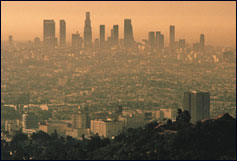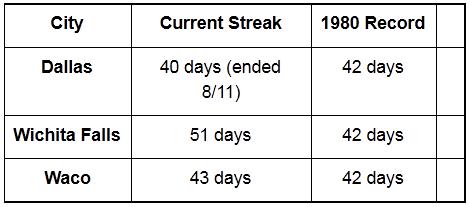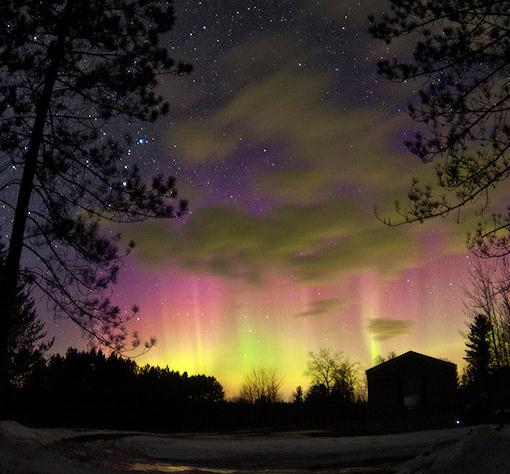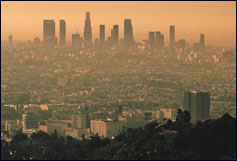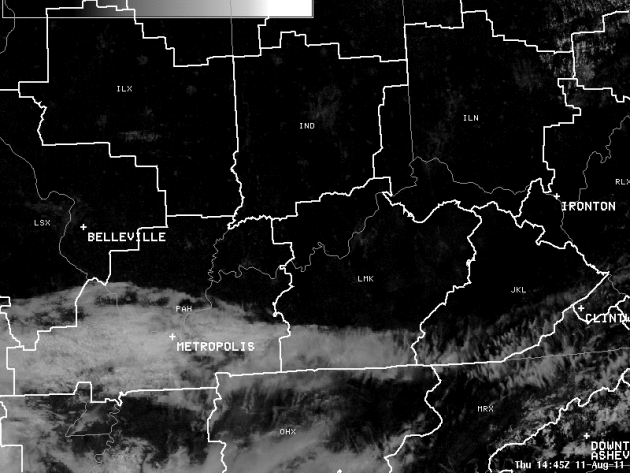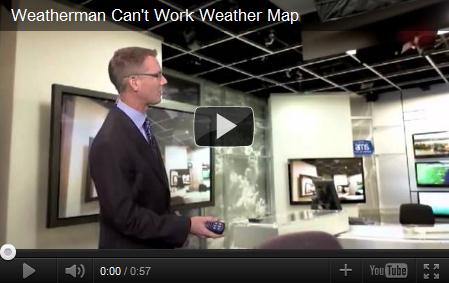87 F. high in Dallas/Fort Worth Saturday,
the first time in 79 days the high at DFW has been below 90.
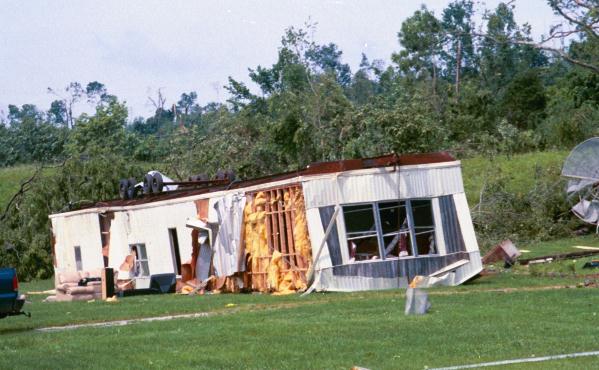 Bad Odds
Bad Odds. According to tornado researcher Chuck Doswell, the odds of surviving a violent tornado in a mobile home are roughly 1/20th the odds, living in an ordinary frame home (with a basement and foundation).
Doswell writes:
"...
The mobile home manufacturing industry has been successful in blocking state legislation requiring mobile home park operators to provide shelters – this means they’re putting the lives of mobile homeowners at risk for the sake of their profits!"
Ground Fog will become more common nationwide in late August and early September, due to the combination of lingering summer moisture and longer nights, which allow the air to cool down to the dew point, resulting in saturation, 100% relative humidity - clouds forming on the ground, a phenomena we call fog.
Over 2,000 Unhealthy Air Alerts So Far In 2011, Nationwide. Details from EPA and NRDC below.
.37" rain fell on Midland, Texas Thursday. That's more rain than fell on Midland the previous 10 months combined!
"...But it was during the July heat wave of 1995 that the highest dew point of all was measured in the Upper Midwest: 90° at Appleton, Wisconsin at 5 p.m. on July 13th of that summer. The air temperature stood at 101° in Appleton at that time leading to a heat index reading of 148°, perhaps the highest such reading ever measured in the United States." - article below from Weather Underground about America's most extreme dew point temperatures.
Fox News "Planet Earth", Brought To You By ExxonMobile. Details below.
Saturday Records:
Highs
Cape Hatteras, NC 91
Apalachicola, FL 97
Lakeland, FL 96
RAIN
San Angelo 0.99”
LOW
Oakland, CA 50
Dozens Hurt At (Indiana) State Fair Stage Collapse. Information was still coming in when I included this post last night - caused by strong, straight-line winds.
Indystar.com has more details: "
Perhaps a dozen people were injured shortly before 9 p.m. tonight when a stage collapsed during a storm at the Indiana State Fair's Sugarland concert. Medics and rescue crews throughout Indianapolis were converging on the State Fairgrounds, 1202 E. 38th St., after Hoosier Lottery Grandstand stage rigging for an outdoor concert collapsed trapping and injuring fans. Some remained trapped about an hour after the collapse. Fallen lighting rigging extended about 15 feet onto track, where some concert-goers were seated between the stage and the grandstand."
* 4 now confirmed dead, estimated winds of 60-70 mph reported before the stage went down.
Saturday Severe Weather Reports:
Kansas:
*reported railroad tie being picked up and damaging a fence ALSO an aluminum flagpole being snapped in half @ Towanda in Butler, CO KS
*T’storm wind gust of 85mph out of Harper CO, KS
*half-dollar sized hail (1.25”)
*tree limbs down & “damaged” trees
Oklahoma:
*tree downed on mobile home 8-12” in diameter & power lines down @ Tahleqah, OK
*60mph outflow gusts
Arkansas:
*Trees down & tree limbs broken
*house struck by lightning @ Greenwood, AR
Sunday Weather Map. The latest WRF model predicts a dry, quiet, sunny day across the far western USA and the central states, pop-up instability T-storms over the central and southern Rockies, a more significant storm pushing into the eastern states, with potentially heavy rain from eastern PA southward to the D.C. area, Knoxville and Atlanta.
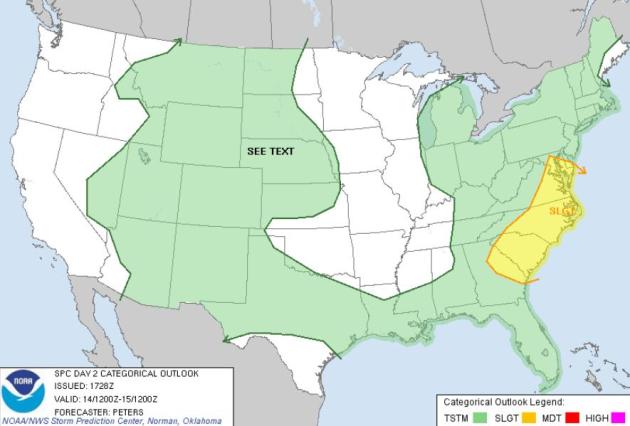 Sunday Severe Risk
Sunday Severe Risk. A vigorous eastbound cool front will spark strong to severe T-storms from the D.C. area and Wilmington southward to Raleigh, Charleston and the Atlanta area, according to SPC.
Record Cold (Last) Week Up North. Here's an excerpt from Mark Seeley's
WeatherTalk blog: "
Following such a hot July and warm start to August who would have guessed we would see some record low temperatures materialize on August 10th (Wed). Northern Minnesota observers reported morning lows in the 30s F on Wednesday this week. Embarrass reported just 36 degrees F on August 10th (but it was not a record for them), while Orr, Bigfork, and Tower reported 39 degrees F. The record-setters occurred at International Falls with 39 degrees F (tied record from 1982), 37 degrees F at Crane Lake (tied record from 1967), and 38 degrees F at Hibbing (new record low)."
Record Dew Point Temperatures. Christopher C. Burt at
Weather Underground has a great post about record dew points around the USA. Here's an excerpt: "
Last summer (2010), Newton, Iowa recorded an 88° dew point on July 14th. Chicago, Illinois’s highest dew point was 83° at 8 a.m. on July 30, 1999 as was Milwaukee, Wisconsin’s with an 82° the same day. But it was during the July heat wave of 1995 that the highest dew point of all was measured in the Upper Midwest: 90° at Appleton, Wisconsin at 5 p.m. on July 13th of that summer. The air temperature stood at 101° in Appleton at that time leading to a heat index reading of 148°, perhaps the highest such reading ever measured in the United States."
Wood Lake, Nebraska Tornado. You can always count on
Severe Studios to be in the right place at the right time. Storm chaser Jeff Gonzales captured some amazing footage of a "white" tornado (the sun was shining on the funnel) near Wood Lake, Nebraska. Details: "
SevereStudios chaser Jeff Gonzales shoots video of a nice late-season tornado in northern Nebraska on Thursday, August 11, 2011."
"Death By Ignorance". Veteran meteorologist, research scientist (and part-time tornado chaser) Chuck Doswell, a legend in the field of tornado research, has a few deep thoughts about tornado warnings and why the death toll was so high this year. Here is an excerpt of a post at his blog, "
Chuck's Chatter": "
We meteorologists could issue pretty much perfect forecasts and yet people still will die as a result of storms when they hit populated areas. Why is that? It’s fatalities that justify the cost associated with studying severe storms. Society invests its resources in our research with the hope that increasing our understanding of storms will result in improved forecasts, in turn resulting in reductions of fatalities associated with storms. Perhaps there’s even some hope of mitigating the damage such storms produce, as well. In my examination of storms and the fatalities they produce, I’ve discovered that a significant fraction of storm fatalities arise from ignorance! Not all fatalities, to be sure – there are other factors that cause fatalities: poverty, physical handicaps, age, etc. But I believe the majority of deaths are directly or indirectly related to ignorance. People drive into tornadoes. People drive into rising flood waters. People ignore severe weather warnings. Why? In part, the answer seems to be ignorance, in one way or another. There are two types of ignorance: the first is simply a lack of knowledge. Everyone has gaps in their knowledge for the simple reason that no one knows everything. But there’s another type of ignorance: willful ignorance. This is when someone has a good reason to know something, because that knowledge could save their lives, but they simply choose not to learn. This willful ignorance has a synonym: stupidity."
Report Details 2,000 "Unhealthy Air" Alerts in 2011. Iimage above courtesy of the EPA. Here are more details, courtesy of EPA and the NRDC, the Natural Resources Defense Council:
"A report from the Natural Resources Defense Council counts more than 2,000 code orange alerts in U.S. communities and national parks from Jan. 1 to early August. One reason for the high numbers may be the extreme heat waves over much of the country. In 1994, another year with lots of heat waves, it "was a notorious example of a bad air year. I'm betting this year will be a notorious year too," he says. It's not surprising that the highest number of code orange days are in California, given the large number of vehicles in the greater Los Angeles area. It also means that smog can spill across the mountains around L.A. into some of the deserts. "We don't expect to find pollution there," Walke says. Some of the numbers included eastern San Bernardino County, with 54 code orange days, Sequoia and Kings Canyon national parks with 44, Joshua Tree National Park with 39 and Atlanta with 28. The numbers are based on early EPA raw data obtained by NRDC."
Missourians Opposed To River-Taming Effort. A comprehensive story from the
AP: "
The upper river includes roughly 140 levees. Under Plan H, all but about 20 would be raised to protect against a 500-year flood — a flood so severe it would be expected to occur once every half-millennium. The plan has some powerful supporters — the Mississippi River Commission, the Upper Mississippi, Illinois and Missouri River Association (UMIMRA), agricultural and political interests in Illinois. But even the corps refuses to endorse it, citing a low return on investment. Virtually from the time the explorer Hernando De Soto crossed the Mississippi River in 1541, people have been trying to control it. Flooding this year again showed those efforts have drawn mixed results. Crests topped record levels at many places in the lower half of the Mississippi, damaging or destroying thousands of homes and businesses. But the lower Mississippi has provisions that the upper part lacks — specifically designated spillways in southern Missouri and in Louisiana that can be intentionally flooded, helping to reduce water levels and averting catastrophe at some communities. The spillways were utilized this spring."

Word From Space: Missouri River Flood, August 2011. Here's an interesting story from NASA, USGS
and
irishweatheronline.com: "Floods lingered along the Missouri River between Nebraska City and Hamburg, Iowa, in early August 2011. The Thematic Mapper on the Landsat 5 satellite captured these natural-color images on August 10, 2011 (top), and August 23, 2010 (bottom)."
"Reverse Lake Effect". During the summer months lakes are cooler than surrounding land, which tends to inhibit cloud formation. Here's an interesting post (and great visual explanation) from the
Central Regional Office of the National Weather Service:
"Thursday afternoon's visible satellite imagery was very cool as two holes in a large area of cumulus clouds persisted over south central Illinois. To understand why these holes appeared, the process of cumulus cloud formation must be understood. Below is a schematic showing the earth's surface and air near the surface being heated by the sun. As the temperature increases rapidly, air parcels begin to rise because they are warmer than their surroundings. If you combine the rising air with enough moisture, clouds are created because the air slowly saturates as it rises and cools. Cumulus clouds are formed! The reason there were no clouds over the large lakes is because water does not heat up as fast as the land does during daytime heating, and therefore air parcels were not rising high enough to create clouds over the lake."
"Mystery Tree" Survives Wildfire - Again. Neatorama.com has the remarkable details - this thing just will not die! "
A 20-foot juniper tree near Sunset Point, Arizona survived a wildfire last week that consumed everything around it. It’s not the first time, either. In fact, the tree is a famous survivor. Every year it’s decorated for Christmas and Independence Day. Right now, it’s covered with several American flags and yellow ribbons. It also has its own water system set up underneath, with several large drums and a pipe to feed it water."
For The Plugged-In, Too Many Choices. The
New York Times highlights an issue that many of us are facing: how much time to devote to Facebook, Twitter, LinkedIn, and other social media options. You could spend the entire day online stalking friends (and strangers) - and many people seem to do just that. Details of the digital-conundrum: "
The relentless pressure to partake of the newest networks was underscored in June with the debut of Google+, Google’s social networking site. According to Nielsen, social networking is now the most popular online activity, ahead of sending e-mails, searching the Internet and playing games. Put another way: one in every four-and-a-half minutes spent on the Web is spent on a social networking site or blog. And last year the average visitor spent 66 percent more time on such sites than in 2009, when early adopters were already feeling digitally fatigued. “I’m on tech overload,” said Ms. Lawrence, who has Facebook and LinkedIn accounts yet barely uses them anymore. “I already feel like I’m experiencing slow death by e-mail.” While she loves technology and has been experimenting with Google+ since it was introduced, “I’m having a really hard time justifying adding yet another social tool to my tool `kit,” she said."(image above courtesy of
articulate.com).
Bat On A Plane. If you missed this it's worth a look: somehow a bat got loose on a recent Atlantic Southeast flight. A passenger slammed the bathroom door shut, trapping the bat - and it (apparently) "escaped" by crawling down thru the toilet (yuck!) Video courtesy of the
Aviation Herald and CNN: "
An Atlantic Southeast Airlines Canadair CRJ-200, flight EV-5121 from Madison,WI to Atlanta,GA (USA), was climbing out of Madison when a bat flew a few rounds through the passenger cabin until a passenger opened the rear lavatory door, the bat explored the inside of the lavatory but then found the door shut again. The crew decided to return to Madison for a safe landing about 10 minutes after departure. The airline reported that a flying animal, unclear whether bird or bat, prompted the return to Madison. The aircraft was searched and subsequently flew to Atlanta. The aircraft reached Atlanta with a delay of 3:45 hours."
"Damn Clicker!" A few million dollars worth of meteorological hardware, and it all comes down to a souped-up garage door opener (the "clicker" TV meteorologists use to advance their weather graphics systems). A couple of times over the years my clicker wouldn't work (sounds serious). The batteries tend to drain when it gets cold - making the clicker useless (meaning you wind up talking about ONE graphic for 3 minutes). Not good. Once, at KARE-11, I got so frustrated with my crippled clicker that I threw it as far as I could - maybe that's why I'm no longer at KARE-11. Here's a quick blurb about Chuck Bell, a TV meteorologist in Washington D.C., as reported by the Washington Post's
Capital Weather Gang. How do you think he handled his "inoperative clicker problem"?
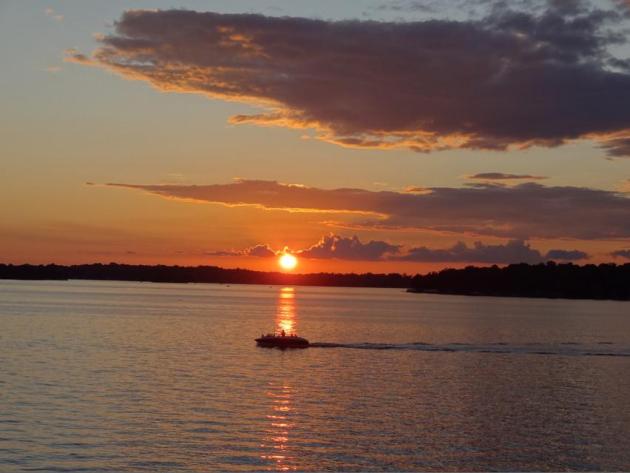

Weather Psychology 101
"Paul, keep your expectations low and you'll never be disappointed," a favorite uncle told me a long time ago. Kind of a lousy way to go thru life, but I see his point. Have you ever noticed that meteorologists tend to be overly pessimistic about the weekend outlook on a Wednesday or Thursday? For good reason. If the weather turns out better than predicted - most people are OK with that. But woe unto 'ye if the Saturday forecast turns out wet, instead of sunny! Expect jeers, heckles & nasty taunts. And that's from loved ones.
The atmosphere normally cools 3-5 degrees for every 1,000 ft. of altitude. Yesterday this "lapse rate" was steeper (it got colder/faster) - thus the late-afternoon instability T-showers.
Expect more fog as we head into the latter half of August; the atmosphere is still moist, but longer nights allow the temperature to fall to the dew point, resulting in 100% relative humidity & lazy clouds (fog).
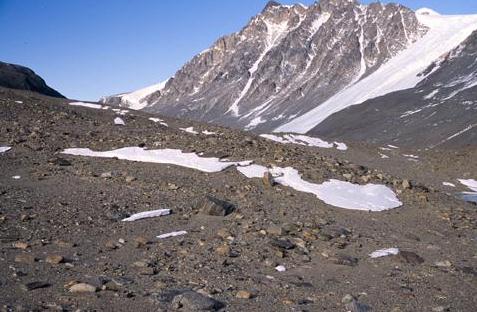 Polar Scientist Charts Melting Caused By Climate Change
Polar Scientist Charts Melting Caused By Climate Change. Here's an excerpt of a story from
VOA, the Voice of America: "
Michael Gooseff follows water to the end of the earth. The Pennsylvania State University hydrologist works in remote regions of the Arctic and Antarctic, where ice and frozen ground are thawing. He expects polar warming and melting to continue at an accelerating pace if no significant reductions are made in climate-changing greenhouse-gas emissions. At the annual convention of the Ecological Society of America in Austin, Texas this week he posed this question: “How are those polar systems responding to climate change?” The answer is based on his on-going research into how water crosses landscapes and what happens to it above and below ground. “In the northern regions, of course, we have sea ice, but a smaller surface area than in the Antarctic where we have very large ice sheets. And that actually plays into the differences in climate change responses that we’re seeing at both of those places.” According to Gooseff, the two regions also differ widely geologically and ecologically. He says the Antarctic McMurdo Dry Valleys station where he’s based “appears like a polar desert system with open exposed soils, with no vascular plants at the surface and with glaciers coming down from the mountains, whereas in northern Alaska, we have a lot of plants. The tundra is actually dense with vegetation and very green.”
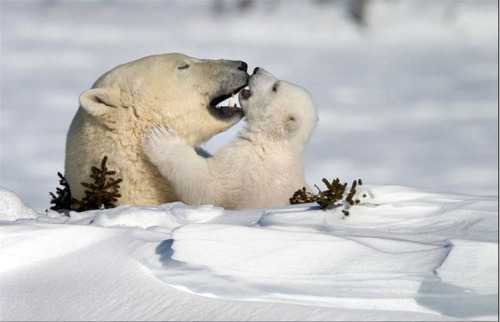 A Polarizing Polar Bear Investigation
A Polarizing Polar Bear Investigation. The story from the
New York Times: "
A modest scientific observation about a few drowning polar bears has enmeshed a government wildlife biologist in an investigation into whether he is guilty of scientific misconduct. The investigation has taken on symbolic importance in the debate over global warming. Skeptics about global warming cite the investigation as evidence that shoddy science is raising undue alarms. The scientist’s defenders believe he is being scrutinized for honest observations that tend to support the scientific consensus that global warming threatens the planet. In 2006, Dr. Charles Monnett and a colleague published a seven-page paper in Polar Biology, a peer-reviewed journal. The paper described a whale surveillance flight over Alaska’s Beaufort Sea in 2004, during which they spotted four polar bear carcasses floating in open water far from land or the receding ice pack. They speculated that as many as 27 bears in all might have died in the same stormy period in the entire relevant habitat. They urged scientists to consider whether such drownings are an overlooked cause of bear mortality that might become worse if Arctic ice continues to recede during part of the year." (photo credit: National Geographic).
 Feeding A Hotter, More Crowded Planet
Feeding A Hotter, More Crowded Planet. Here's an interesting Q&A from
NPR:
"
IRA FLATOW, host: You're listening to SCIENCE FRIDAY, I'm Ira Flatow. The American Southwest is beginning to resemble the Dust Bowl of the Depression. Cotton crops have crumbled. It hasn't rained much in over a year.
The situation is even worse in East Africa. Droughts there have devastated harvests, and according to the U.N., over 11 million people there are at risk of starvation. I'm sure you've seen the pictures on the nightly news and online.
Is this sort of thing going to become the norm? Because climate models predict that extreme weather events, like droughts and floods, will become more common in the future, threatening farmers' ability to produce reliable harvests.
And not only will growing the food become more difficult, but the farmers will need to produce more of it because by the year 2050, there will be another two billion people on the planet, meaning we'll have over nine billion mouths to feed.
So how are we going to grow more food than ever on a planet with more frequent droughts, floods and heat waves? Are high-tech solutions like genetically modified crops the answer? Or do we need to look back toward more traditional farming techniques, like getting fertilizer to farmers who can't afford it or to keep the soil healthy and fertile? Maybe a little bit of both?"
 Learning From Bastardi's Mistakes
Learning From Bastardi's Mistakes. Joe Bastardi is a meteorologist who recently went on Fox News and made some (scientifically unsound) statements about climate change. A thorough debunking of his rant can be found
here: "
For the sake of those with the guts to face hard science, who are willing to invest enough actual thought to learn something more complicated than soundbites and platitudes, we’ll address some of the mistakes in Joe Bastardi’s comment. There are too many to address them all in one blog post. So let’s start small, with just the first paragraph: "When one pushes an empty cart and then stops pushing, the cart keeps moving until the work done on it is dissipated. How is it, that the earths temperature has leveled off, if co2 continues to rise and it is supposed to be what is causing the rise.. The answer is obvious. it is the earths temperature which is driving the co2 release into the atmosphere. That is what Salby opines, and he is correct."
Congratulations, Joe, you’ve managed to squeeze quite a few fallacies into a single paragraph. Impressive indeed."
* photo credit for Bastardi image
here.
 Climate Change Affecting Atlantic Mackerel
Climate Change Affecting Atlantic Mackerel. This one from the
UPI: "
NARRAGANSETT, R.I., Aug. 12 (UPI) -- Environmental factors have affected Atlantic mackerel from Cape Hatteras, N.C., to Newfoundland, shifting them northeast into shallower waters, researchers say. Scientists with the National Oceanographic and Atmospheric Administration say mackerel, which migrate great distances on a seasonal basis to feed and spawn, are sensitive to changes in water temperature and the finding could have significant implications for U.S. commercial and recreational mackerel fishing activities that mostly occur during late winter and early spring." (photo credit:
floridiannature.com).
Polar Climate Change May Lead To Ecological Change. Here's an excerpt of a story at
eurekaalert.org: "
Ice and frozen ground at the North and South Poles are affected by climate change induced warming, but the consequences of thawing at each pole differ due to the geography and geology, according to a Penn State hydrologist. "The polar regions, particularly the Arctic, are warming faster than the rest of the world," Michael N. Gooseff, associate professor of civil and environmental engineering, told attendees today (Aug. 11) at the 96th annual meeting of the Ecological Society of America in Austin, Texas. "As a consequence, polar ecosystems respond directly to changes in the earth systems at the poles." These changes, though different at each pole, could be significant in their effects on not only the local environment, but also globally. While the central part of the Arctic is composed of ice over water, northern Canada, Alaska, Siberia and Greenland all have landmasses within the Arctic Circle. The associated land and water ecosystems are affected by melting ice and thawing soils, but in Antarctica, where much of the ice overlays a continent, the warming alters streams, lakes and the tiny plants and animals that live there. "Our focus on the north is in part because it is inhabited, but it is also because the ice there is more vulnerable," said Gooseff. "Temperatures and snow and rain across the tundra shifts annually and seasonally. We know that fall is beginning later than it once did." In the Arctic, where there is more immediate feedback from the higher temperatures, the warming is degrading permafrost, the layer of the ground that usually remains frozen during annual thawing events. This causes creation of a boggy, uneven landscape with a disturbed surface. Subsequent rain or snowmelt can erode this surface carrying silt and sediment into bodies of water, changing the paths of rivers and streams. Debris flows are also a common occurrence in degraded permafrost areas."
At Fox News, "Planet Earth" Is Sponsored By ExxonMobil. Here's a post from
Media Matters: "
We noted in June that Fox News' iPad app was sponsored exclusively by ExxonMobil, a corporation known for paying think tanks to obfuscate the scientific consensus on climate change. Now FoxNews.com's "Planet Earth" section is also brought to you by the oil giant: In fact, FoxNews.com's entire Science & Technology section and their opinion page appear to be sponsored by ExxonMobil; the other sections of their website are not. Earlier this year, FoxNews.com sought to debunk the fact that Earth has warmed over the past 30 years, as well as the notion that human activity has contributed to the warming with a "Planet Earth" article, portions of which "are utter nonsense" and "do not make sense" according to climatologists consulted by Media Matters. Two recent stories that Fox News' Planet Earth section ran on climate change were based around claims pushed by the Heartland Institute's James Taylor and quoted Taylor's views. A post by Taylor, which baselessly claimed a research group "doctors sea level data" to exaggerate climate change, inspired a FoxNews.com article asking, "Is climate change raising sea levels, as Al Gore has argued -- or are climate scientists doctoring the data?"


